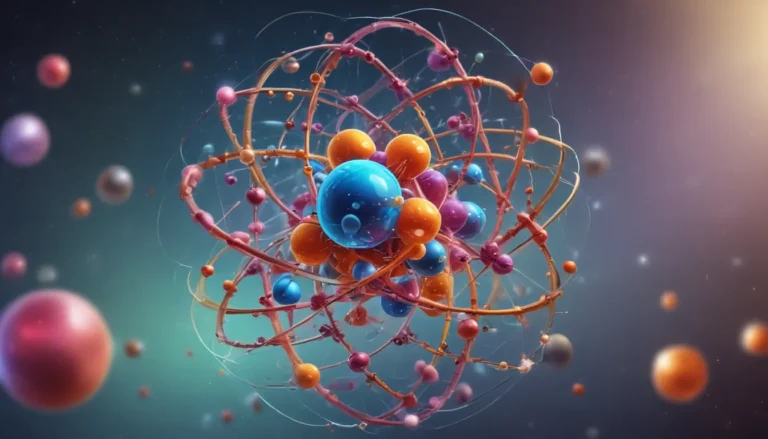A Note About Images: The images used in our articles are for illustration purposes only and may not exactly match the content. They are meant to engage readers, but the text should be relied upon for accurate information.
In the realm of chemistry, equilibrium constant, denoted as Kc, stands as a pivotal concept that sheds light on the dynamics of chemical reactions. By serving as a quantitative measure of the balance between reactants and products in a chemical system at equilibrium, Kc offers invaluable insights into the behavior of various chemical species. Whether you’re an ardent chemistry enthusiast or a budding student navigating the intricacies of chemical equilibrium, delving into the fascinating realm of Kc can enrich your understanding and appreciation for this fundamental concept.
Understanding the Essence of Equilibrium Constant (Kc)
At its core, the Equilibrium Constant (Kc) is a quantitative metric utilized in chemical reactions to ascertain the concentration of reactants and products when equilibrium is achieved. Representing the ratio of product concentrations to reactant concentrations at a specific temperature, Kc plays a pivotal role in elucidating the progression of a reaction towards the formation of products.
The Influence of Temperature on Kc
One intriguing facet of equilibrium constant is its susceptibility to temperature variations. Changes in temperature can herald a shift in the equilibrium position, consequently altering the value of Kc and thereby affecting the direction in which the equilibrium leans.
Decoding the Magnitude of Kc
The value of Kc serves as a barometer for gauging the extent of a chemical reaction. A high Kc value suggests a proclivity towards product formation, indicating a favorable reaction that proceeds extensively. Conversely, a low Kc value signifies a penchant for the reactants, exemplifying an equilibrium that tilts towards reactant predominance.
Unveiling the Constancy of Kc
Notably, the equilibrium constant, Kc, remains impervious to the initial concentrations of reactants and products. Instead, it hinges solely on the temperature and the stoichiometry delineated by the balanced chemical equation, underscoring its stability in the face of varying starting concentrations.
The Interplay Between Kc and Law of Mass Action
Inextricably intertwined with the Law of Mass Action, Kc elucidates the relationship between reactant concentrations and reaction rates. The Law of Mass Action posits that the rate of a chemical reaction is directly proportional to the concentrations of the reactants raised to the power of their respective stoichiometric coefficients, thereby underpinning the essence of Kc.
Equilibrium Constant for Reversible Reactions
Within the realm of reversible reactions, where products can revert to reactants and vice versa, Kc emerges as a delineator of the product-to-reactant concentration ratio at equilibrium, offering valuable insights into the equilibrium state.
The Nuances of Kc Units
The units of Kc vary contingent upon the overall order of the reaction. For a first-order reaction, Kc assumes units of moles per liter (mol/L), with second-order reactions necessitating units of (mol/L)^2, iteratively adapting to the reaction order.
The Intriguing Parallels Between Kc and Reaction Quotient (Qc)
Kc often finds itself juxtaposed against the reaction quotient, Qc, in a bid to discern whether a reaction has attained equilibrium or is still evolving. By scrutinizing the interplay between Kc and Qc, one can ascertain the equilibrium status of a given reaction.
The Impervious Nature of Kc to Pressure Fluctuations
A noteworthy trait of the equilibrium constant, Kc, is its immunity to pressure alterations, provided the mole count of gases remains stagnant. This resilience stems from equilibrium expressions being predicated on substance concentrations rather than pressures, cementing Kc’s steadfast nature.
The Nuanced Relationship Between Kc and Reaction Rates
Despite its proficiency in delineating equilibrium compositions, Kc remains mum on the tempo and rate at which a reaction transpires. By focusing solely on equilibrium concentrations, Kc illuminates the static equilibrium state without venturing into the realm of reaction kinetics.
The Temperature-Specific Essence of Kc
Crucially, the value of Kc for a given reaction is intrinsically tied to the temperature at which the equilibrium is attainted. Modifying the temperature can usher in a paradigm shift in the equilibrium constant value, underscoring the temperature-dependency of Kc.
Kc’s Harmony with Le Chatelier’s Principle
Harboring an intricate rapport with Le Chatelier’s Principle, Kc witnesses its value swaying in response to temperature fluctuations. An elevation in temperature nudges the equilibrium towards heat absorption, while a decrease sways it towards heat release, thereby influencing the Kc value.
Illuminating Outcomes of Equilibrium Constant Exploration
In essence, equilibrium constant (Kc) embodies a cornerstone concept in chemistry, crucial for navigating the labyrinth of chemical reactions and equilibria. Through the lens of Kc, scientists unravel the enigma of reaction extents, forecasting the concentrations of reactants and products at equilibrium with precision. Immerse yourself in the captivating world of equilibrium constant, unlocking a deeper comprehension of chemical reactions, equilibria, and the governing principles that underpin them. Whether you’re a burgeoning chemist or an inquisitive learner, embracing the nuances of Kc promises to broaden your scientific horizons, ushering in a realm teeming with possibilities.
Frequently Asked Questions About Equilibrium Constant (Kc)
-
What does the equilibrium constant (Kc) signify?
The equilibrium constant (Kc) denotes the ratio of product concentrations to reactant concentrations in a chemical reaction at equilibrium, offering insights into the extent of the reaction towards product formation. -
Can the value of Kc change?
The equilibrium constant, Kc, remains steadfast at a specific temperature and only alters when the temperature undergoes adjustments. Although the concentrations of reactants and products may fluctuate, leading to a revised equilibrium position and a new Kc value. -
What do different values of Kc signify?
A Kc value exceeding 1 signals a prevalence of products over reactants at equilibrium, favoring product formation. Conversely, a Kc value below 1 indicates a preponderance of reactants, fostering the reverse reaction. -
Can Kc determine the rate of a reaction?
Kc, being an equilibrium constant, does not shed light on the reaction rate but rather focuses on the concentration equilibrium of reactants and products. -
What factors influence the magnitude of Kc?
The equilibrium constant, Kc, can be swayed by variables such as temperature, pressure, and catalyst presence, culminating in equilibrium position shifts and altered Kc values. -
Can Kc possess a negative value?
Kc, as an equilibrium constant, remains anchored in positive territory or zero, precluding the occurrence of negative values that implicate the product-to-reactant ratio at equilibrium. -
What role does Kc play in chemical industries?
Equilibrium constant (Kc) serves as a linchpin in chemical industries, guiding reaction kinetics, optimizing reaction conditions, and refining chemical processes to boost product yields and operational efficiency. -
Can Kc forecast the feasibility of a reaction?
By gauging the magnitude of the equilibrium constant (Kc), one can discern the viability of a reaction. A lofty Kc value denotes a pronounced leaning towards product formation, while a diminutive Kc value hints at a diminished likelihood of product generation. -
How can Kc be calculated?
Kc is derived by gauging the equilibrium concentrations of reactants and products through experimental measurements, culminating in the deployment of pertinent formulae predicated on the balanced chemical equation. Techniques like spectroscopy and chromatography facilitate concentration determinations. -
Is Kc conducive for inter-reaction comparisons?
Indeed, equilibrium constant (Kc) stands as a pertinent yardstick for juxtaposing the extents of varied reactions. By scrutinizing the Kc values of diverse reactions, one can unspool the reactions’ proclivities towards product formation.
Embarking on an expedition through the labyrinthine corridors of equilibrium constant (Kc) marks just the inception of your foray into chemistry’s enthralling tapestry of concepts. Venture deeper into reaction quotients, unraveling their linkages to chemical reactions and their evolutionary trajectories. For a panoramic vista, unearth the captivating realm of physical chemistry, encompassing thermodynamics, kinetics, and quantum mechanics. And if you harbor a curiosity about equilibrium achievement within systems, delve into the intriguing tenets of chemical equilibrium, where forward and reverse reactions converge in a symphony of dynamic equilibrium. Keep enriching your intellect, poised to master chemistry’s foundational pillars and broaden your horizons in the scientific realm!
Elevating Your Learning Experience with Impartial and Engaging Content
Our steadfast commitment to imparting trustworthy and riveting content stands as the cornerstone of our mission. Each tidbit on our platform is a contribution from fellow users like you, crafting a mosaic teeming with diverse insights and knowledge. Upheld by unwavering dedication, our meticulous editorial team meticulously vets each submission to ensure not just fascination but also credibility. Entrust in our dedication to excellence and authenticity as you traverse this educational odyssey with us.






